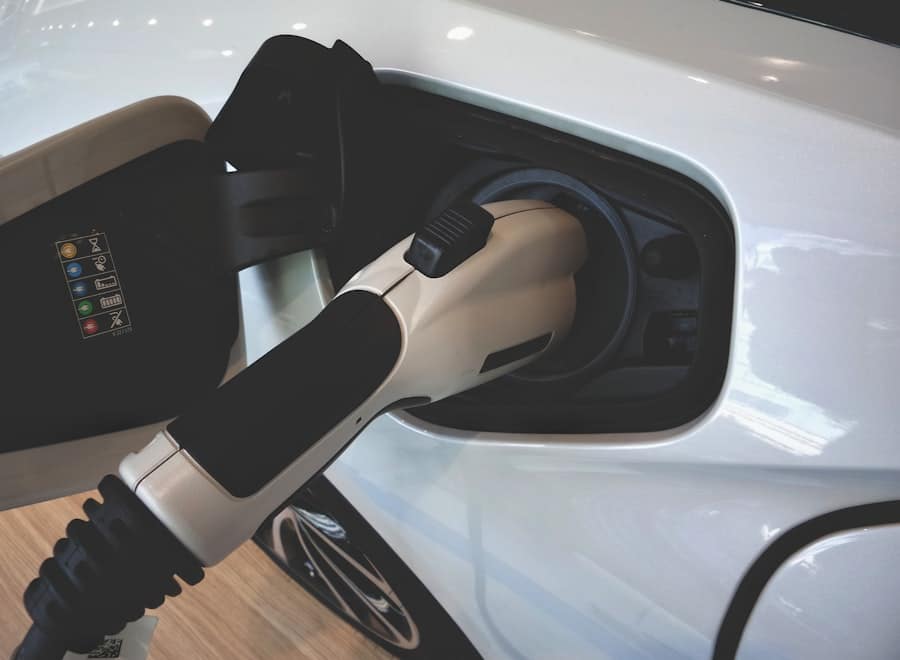In the modern digital age, smartphones have become indispensable tools for communication, entertainment, and productivity. As these devices have evolved, so too has the demand for longer battery life. Users expect their smartphones to last throughout the day, accommodating everything from streaming videos and playing games to navigating through GPS and managing work emails.
The battery life of a smartphone is not merely a technical specification; it significantly influences user experience and satisfaction. A device that runs out of power in the middle of a busy day can lead to frustration and inconvenience, making battery performance a critical consideration for consumers. The importance of battery life extends beyond mere convenience; it also impacts how users interact with their devices.
A smartphone that can sustain prolonged usage without frequent recharging allows for greater flexibility and freedom. This is particularly relevant in an era where many individuals rely on their smartphones for both personal and professional tasks. As such, understanding the intricacies of smartphone battery life—what affects it, how it varies across brands, and what innovations are on the horizon—becomes essential for anyone looking to make an informed purchase.
Key Takeaways
- Smartphone battery life is a crucial factor for users when choosing a new device.
- Factors affecting battery life include screen brightness, app usage, and battery capacity.
- Apple, Samsung, and Google are popular smartphone brands with varying battery life performance.
- Testing methodologies for battery life include video playback, web browsing, and standby time.
- Tips for maximizing smartphone battery life include adjusting settings, using power-saving modes, and minimizing background app activity.
Factors Affecting Battery Life
Hardware and Software Efficiency
However, battery capacity alone does not dictate performance; the efficiency of the device’s hardware and software also plays a crucial role. For instance, a smartphone with a powerful processor may consume more energy than one with a less demanding chip, even if both have similar battery capacities.
Display Technology and Settings
Another critical factor is the display technology used in smartphones. OLED screens, for example, are known for their vibrant colors and deep blacks but can consume more power when displaying bright images. Conversely, LCD screens may be less power-hungry but do not offer the same level of visual quality. Additionally, screen size and resolution can impact battery life; larger displays with higher resolutions require more energy to operate. The brightness settings also play a role
Users who keep their screens at maximum brightness will experience faster battery drain compared to those who use lower settings.
Comparison of Battery Life Across Popular Smartphone Brands
When examining battery life across various smartphone brands, notable differences emerge that can guide consumer choices. Apple’s iPhone lineup, for instance, has made significant strides in optimizing battery performance through software enhancements and efficient hardware integration. The iPhone 13 Pro Max, with its 4,352 mAh battery, is often praised for its ability to last over 12 hours during continuous web browsing or video playback.
This impressive performance is attributed not only to its battery capacity but also to Apple’s A15 Bionic chip, which is designed for energy efficiency. On the other hand, Android manufacturers like Samsung and OnePlus have also made substantial advancements in battery technology. The Samsung Galaxy S21 Ultra features a 5,000 mAh battery that can easily last a full day under heavy usage conditions.
OnePlus has similarly focused on providing robust battery life; the OnePlus 9 Pro boasts a 4,500 mAh battery that supports fast charging capabilities, allowing users to recharge quickly when needed. However, while these devices may offer longer battery life on paper, real-world usage often reveals variances based on user habits and app demands.
Testing Methodologies for Battery Life
To accurately assess smartphone battery life, various testing methodologies are employed by tech reviewers and industry analysts. One common approach involves standardized tests that simulate real-world usage scenarios. For example, reviewers may conduct web browsing tests where they continuously load web pages until the device runs out of power.
This method provides insights into how well a smartphone performs under typical conditions that users might encounter daily. Another popular testing methodology is video playback tests, where devices are subjected to continuous video streaming until the battery depletes. This test helps gauge how efficiently a smartphone manages power during media consumption—a critical aspect for users who frequently watch videos or stream content.
Additionally, some reviewers utilize specialized software tools to monitor power consumption in real-time while running various applications. This data can reveal which apps are particularly demanding on battery life and help users make informed decisions about app usage.
Tips for Maximizing Smartphone Battery Life
Maximizing smartphone battery life is a common concern among users who want to extend their device’s usability throughout the day. One effective strategy is to manage screen brightness intelligently. Many smartphones come equipped with adaptive brightness features that automatically adjust screen brightness based on ambient light conditions.
Utilizing this feature can significantly reduce power consumption without sacrificing visibility. Another practical tip involves managing background app activity. Many applications continue to run in the background even when not actively used, consuming valuable battery resources.
Users can navigate to their device settings to restrict background activity for less critical apps or enable battery saver modes that limit background processes during low-power situations. Additionally, disabling location services for apps that do not require constant GPS access can further conserve battery life.
Innovations in Smartphone Battery Technology
The landscape of smartphone battery technology is continually evolving, with innovations aimed at enhancing performance and longevity. One notable advancement is the development of lithium-sulfur batteries, which promise higher energy density compared to traditional lithium-ion batteries. These new batteries could potentially offer longer usage times while being lighter and more environmentally friendly.
Fast charging technology has also seen significant improvements in recent years. Many manufacturers now offer proprietary fast charging solutions that allow users to recharge their devices rapidly—sometimes up to 100% in under an hour. This innovation alleviates concerns about running out of power during critical moments by enabling quick top-ups throughout the day.
Furthermore, wireless charging technology has advanced as well, with many smartphones now supporting fast wireless charging options that provide convenience without the hassle of cables.
User Reviews and Experiences with Smartphone Battery Life
User reviews often provide valuable insights into real-world experiences with smartphone battery life that go beyond technical specifications. Many users report that while manufacturers may advertise impressive battery capacities, actual performance can vary significantly based on individual usage patterns. For instance, heavy gamers may find that their devices drain quickly during extended gaming sessions, while casual users who primarily use their phones for texting and social media may experience longer-lasting batteries.
Moreover, user feedback frequently highlights the importance of software updates in optimizing battery performance. Many consumers have noted improvements in battery life following system updates that include optimizations and bug fixes related to power management. This underscores the significance of not only hardware specifications but also ongoing software support in ensuring that smartphones maintain optimal performance over time.
Conclusion and Recommendations for Choosing a Smartphone with Durable Battery Life
When selecting a smartphone with durable battery life, consumers should consider several key factors beyond just mAh ratings.
Reading user reviews can provide insights into real-world performance and help identify any potential issues related to battery longevity.
Additionally, prospective buyers should pay attention to innovations in battery technology and charging capabilities offered by different brands. Understanding personal usage habits—whether one is a heavy user or prefers light tasks—can also guide choices toward devices that best meet individual needs for battery performance. Ultimately, making an informed decision requires balancing specifications with practical experiences shared by other users in order to find a smartphone that delivers reliable and lasting power throughout the day.
If you are someone who relies heavily on your smartphone for social media management, you may also be interested in exploring the best software for social media management in 2023. This article provides insights into the top tools available to help streamline your social media efforts. Additionally, if you are looking to create engaging video content for your social media platforms, you may want to check out the best AI video generator software available today, as highlighted in this article. And for those who are in the market for a new laptop to support their coding and programming needs, this




